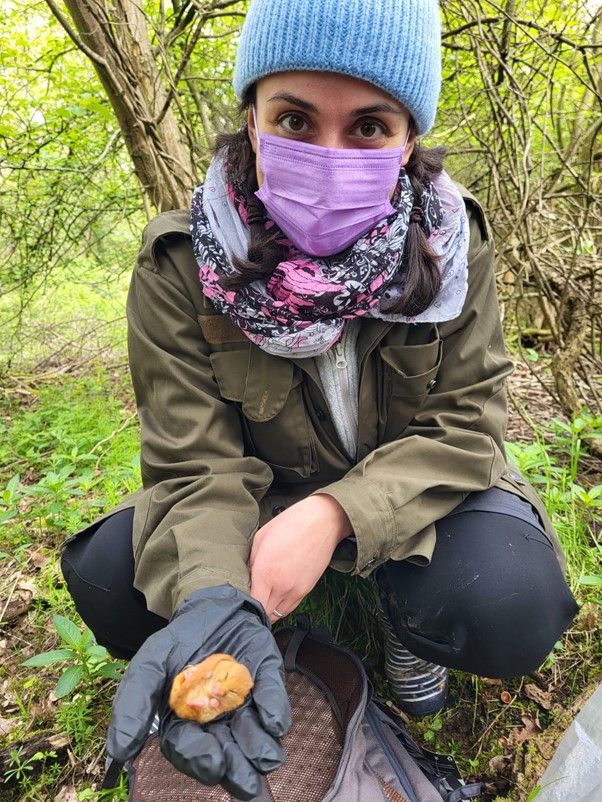Meet Alice Ciampricotti: PTES intern
In this series, we chat to the dedicated staff members, conservation partners and volunteers at PTES. We find out why each of them chose a career in wildlife conservation, what they find rewarding about their work and what they love most about what they do.
Alice Ciampricotti
PTES intern from Italy
Why did you decide to go into wildlife conservation?
I’ve been interested in animals since I was young. I knew I wanted to fight for living things, but didn’t yet know how. What introduced me to the world of conservation was the film Gorillas in the mist. It tells the story of Dian Fossey, a fantastic woman and researcher to whom we owe the survival of mountain gorillas. Without her intervention they would have become extinct long ago.
After I read Dian’s book, I became passionate about her research, starting to understand the dynamics and difficulties of such great conservation work, and at the same time understanding the importance and urgency of doing it.
During my masters, I worked with two small mammals, edible dormice and hazel dormice. I realised that, although research on these species is progressing, we still need more information to improve our understanding of them. I enjoy this type of work and I hope to build a career out of it.
What’s your role and what’s the most rewarding part of it?
I recently graduated from the University of Turin. I’ve not decided what I want to focus on yet but I’m hoping to build a career in research. I recently had the opportunity to volunteer for the Nottinghamshire Dormouse Group, where I learnt more about hazel dormice, a fantastic species. One of the things that gives me the most satisfaction is knowing that every effort will increase the knowledge of hazel dormice and contribute to its protection.
Has your conservation work been rewarding? If so, in what way?
Absolutely, yes. Both during the data collection for my thesis and my volunteering in England. I worked in all weathers, in physically and mentally demanding conditions. But, even when tired at the end of the day, I enjoyed the satisfaction of having played my part in the research for dormice.
What difficulties or challenges do you face in your work and how do you think you’ll overcome them?
One of the difficulties is the resistance from some people to conservation efforts. It’s important to have collaboration between conservation agencies and people, from land owners to the general public. I believe it’s important to understand that each of us is a part of this network, and that every organism, from the smallest bacteria to the largest mammal, plays its role.
Working for the conservation of any species or habitat means understanding its importance and working towards a world where man and animals can coexist. I’ve spoken with several people and believe that the most important thing is to listen and try to understand what their fears or doubts are, and give them a sincere answer to their questions. After doing this with kindness, I’ve found that most people are more than open to dialogue and collaboration.
Do you have a special love for a particular species and why?
I have a passion for all mammals but hazel dormice have certainly earned a special place in my heart. I am amazed by the resilience and adaptability of this species.
What does the future hold? For you and for your species?
In my future I see a career in conservation and (hopefully) also in research. I think that dormice have the possibility of recovering, given that they’re demonstrating great adaptability in the face of climate change.
How can we best inspire the younger generation and what advice would you give to young conservationists starting out?
This question isn’t easy to answer. I’m convinced that introducing children to the importance of the natural world is fundamental. We should encourage them to appreciate wildlife and show them how they can get involved and help. To young conservationists who are just starting out, I’d say it can be a tough job, but you get so much satisfaction from it, so don’t let the first obstacle you encounter get you down.
Header image credit Alice Ciampricotti


